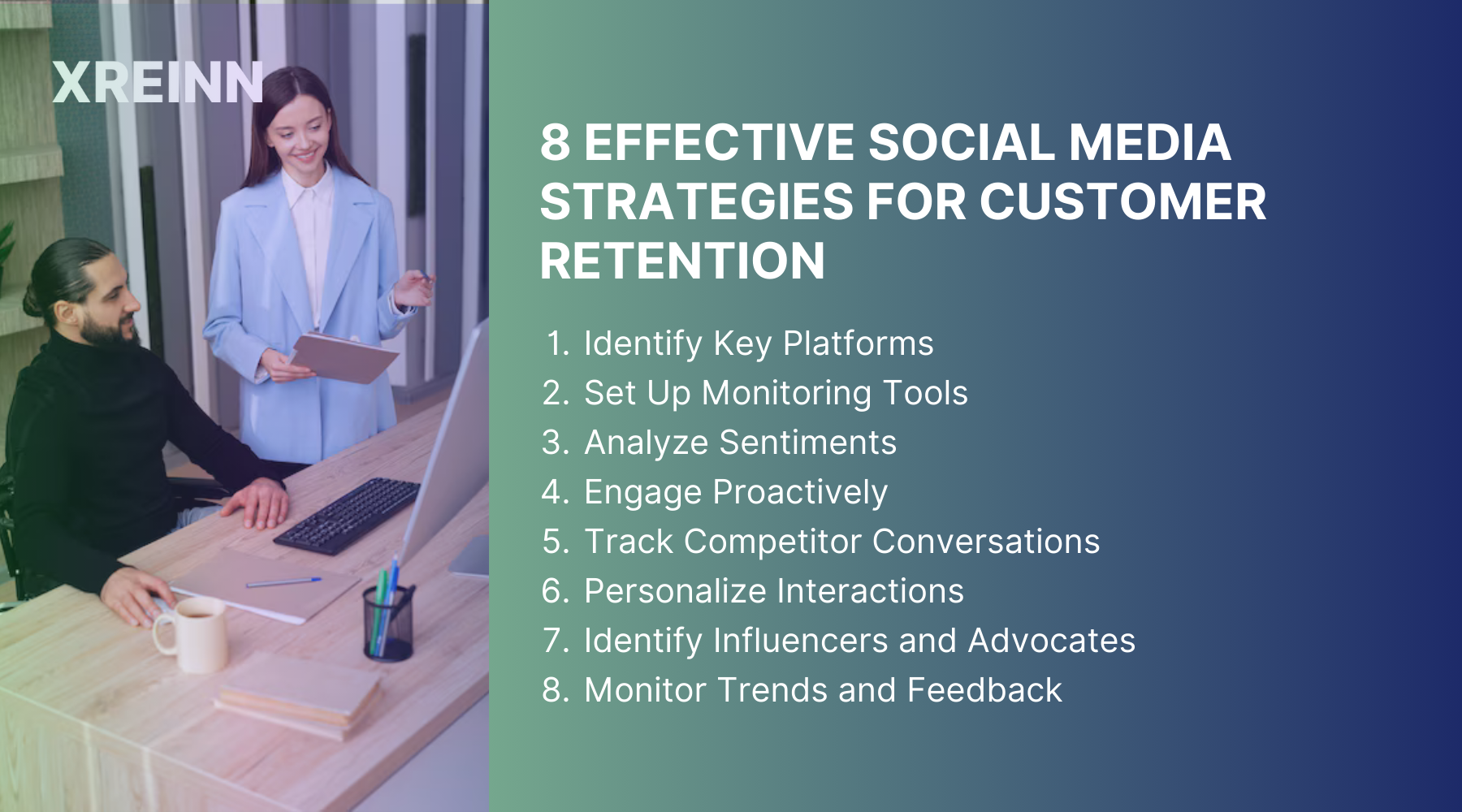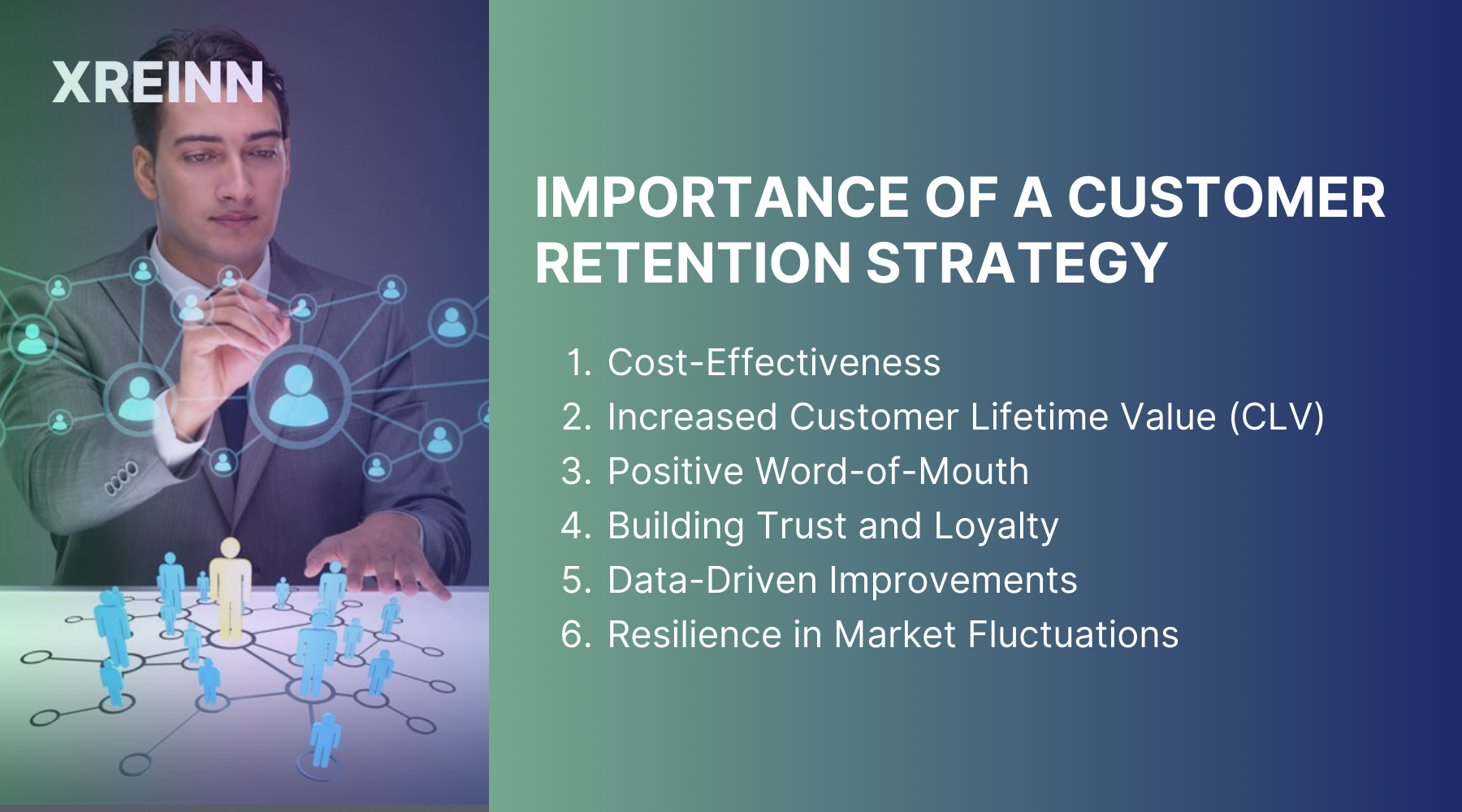Social Listening
8 Effective Strategies of Social Listening to Improve Customer Retention
Jul 21, 2024
Retaining customers in today's competitive market requires more than just offering a good product or service. You need to understand your customers and predict their needs deeply. One powerful way to achieve this is through social listening. You can gain invaluable insights into customer behavior, preferences, and sentiments by actively monitoring and analyzing social media conversations.
This allows you to address concerns promptly, personalize your interactions, and adapt your strategies to meet evolving customer expectations. Ultimately, social listening helps you build stronger relationships, improve customer satisfaction, and drive long-term loyalty.
8 Effective Social Media Strategies for Customer Retention

Using social media for customer retention requires a strategic approach that involves actively listening to and engaging with your customers.
Here are the best strategies to effectively use social media for customer retention:
Identify Key Platforms
The first step is to understand where your customers spend their time online. Different demographics prefer different platforms. For instance, younger audiences might prefer Instagram, Snapchat, or TikTok, while professionals might be more active on LinkedIn. By identifying these platforms, you can focus your efforts on where they will have the most impact.
Set Up Monitoring Tools
Advanced social listening tools like, Sprout Social, and Hootsuite can track mentions of your brand, products, and relevant keywords across various social media platforms. These tools help you filter through the noise to focus on the conversations that matter most. They also provide analytics and insights that are critical for understanding customer sentiment and behavior.
Analyze Sentiments
Sentiment analysis goes beyond counting mentions. It helps you understand the emotional tone behind customer comments. Are your customers happy, frustrated, or indifferent? By analyzing these sentiments, you can prioritize issues that need immediate attention and identify areas where you excel. For example, if customers frequently mention fast shipping times positively, you know this is a strong point for your business.
Engage Proactively
Don't wait for customers to tag or mention you directly. Engage in broader conversations related to your industry. For instance, if someone tweets about a problem that your product can solve, respond to them even if they didn't tag your brand. This proactive engagement shows customers that you are attentive and ready to help, which can significantly improve their loyalty.
Track Competitor Conversations
Monitoring what customers say about your competitors provides valuable insights into their strengths and weaknesses. For example, if customers are complaining about a feature that your product handles well, highlight this in your communications. Understanding your competitors' challenges and successes helps you position your brand more effectively.
Personalize Interactions
Use the data you collect to personalize your customer interactions. Address customers by their names, refer to their past interactions with your brand, and customize your responses to their specific needs. Personalized engagement makes customers feel valued and more connected to your brand. For example, if a customer tweeted about a specific issue last month, follow up to see if they’re still experiencing the problem or if they were satisfied with the resolution.
Identify Influencers and Advocates
Identify key influencers and brand advocates within your customer base. These are individuals who have a significant following and can influence others' opinions about your brand. Engage with these influencers regularly and encourage them to create user-generated content. This not only amplifies positive sentiment but also builds a community around your brand. For instance, a satisfied customer might share their experience with your product on their blog or social media channels, reaching a wider audience.
Monitor Trends and Feedback
Keep an eye on emerging trends and customer feedback. Use this information to adapt your products, services, and communication strategies. For example, if you notice a growing trend in customer preferences for eco-friendly products, consider how your brand can align with this trend. Staying ahead of trends ensures that your brand remains relevant and responsive to customer needs.
Importance of a Customer Retention Strategy

A well-defined customer retention strategy is essential for long-term business success. Here’s why it's so important, explained in detail:
Cost-Effectiveness
Acquiring new customers is significantly more expensive than retaining existing ones. Studies show that it can cost up to five times more to attract a new customer than to keep an existing one. By focusing on retention, you can reduce your marketing and acquisition costs, which directly improves your bottom line.
Increased Customer Lifetime Value (CLV)
Loyal customers tend to spend more over time. The longer a customer stays with your brand, the more they are likely to purchase. By implementing effective retention strategies, you increase Customer Lifetime Value, which directly impacts your revenue. For example, a customer who initially buys a basic product might later purchase premium versions, accessories, or related products.
Positive Word-of-Mouth
Satisfied customers are likely to recommend your brand to friends, family, and colleagues. This organic word-of-mouth can be a powerful marketing tool. People trust recommendations from their peers more than traditional advertising. Encouraging positive word-of-mouth through excellent service and engagement can drive new customer acquisition at no additional cost.
Building Trust and Loyalty
Consistent engagement and prompt resolution of customer issues build trust. Trust is a critical component of customer loyalty. Loyal customers are less likely to switch to competitors and more likely to forgive occasional mistakes. For instance, if a customer experiences a shipping delay but you handle their complaint efficiently and courteously, they are more likely to remain loyal.
Data-Driven Improvements
By continuously listening to your customers and gathering feedback, you can make data-driven improvements to your products, services, and overall customer experience. This continuous feedback loop ensures that you are always evolving to meet customer needs. For example, if customers frequently request a new feature, implementing it can improve satisfaction and retention.
Adaptability in Market Fluctuations
A loyal customer base provides a cushion against market fluctuations. When market conditions are challenging, loyal customers can help sustain your business by continuing to purchase and provide steady revenue streams. This stability is critical for long-term business success. For instance, during economic slowdowns, loyal customers might continue buying from you while new customer acquisition slows down.
Conclusion
A customer retention strategy is not just about keeping your customers but also about understanding them deeply, engaging with them meaningfully, and continuously improving your offerings based on their feedback. By using social media effectively for customer retention, you can build a loyal customer base that supports your business growth and sustainability.

Data Analytics
Jun 27, 2024Master key concepts in data analytics with practical tips to enhance decision-making and achieve success in your projects and professional growth

Data Analytics
Jul 01, 2024Learn the essential stages of the data analytics workflow to turn your data into valuable business insights and drive growth.

